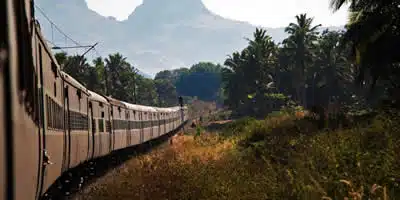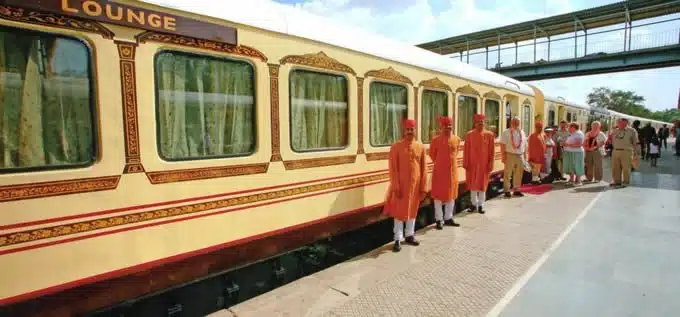Travelling by rail in India is considered an integral part of any visit, and I found it to be a very rewarding experience on my trip. That is, once you’ve made some sense of the various ticket classes – there are seven, in all – and once you’ve actually bought a ticket; the melee you find at your average ticket counter requires no small amount of determination to overcome.
In total, in my three-month visit, I took eleven trains, amounting to 114 hours in transit and covering a little over 4,300 kilometres. Based on those journeys, here are my essential pointers, intended to help you get the most out of your trip. The overriding principle is to “be prepared”:
Tips when travelling India by rail
1. If you haven’t got a sleeping bag or a blanket with you, buy one. The air-conditioned (AC) carriages provide simple bedding, free of additional charge, but the less expensive (more sociable) sleeper cars do not. I made a mistake and travelled with nothing on my first overnight journey to Agra, and the breeze from the windows (which never close properly) blowing down my neck all night meant I slept fitfully, and only after donning almost every item of clothing had with me. Because of the heat in Mumbai I hadn’t given much thought to this beforehand – I learnt my lesson.
2. If you’re a light sleeper, some earplugs may be in order, to defend against the cacophony of snoring you sometimes encounter.
3. If you’re of a cautious disposition, buy a padlock and chain to fix your bag to the seats. I never encountered any problems on my trip but I had very little of value with me in any case. Even with your baggage locked, keep essentials like your passport and cash on your person.
4. Make sure you carry some loose change with you. The chai-wallahs are understandably reluctant to break a hundred rupee note in order for you to purchase one chai costing four rupees a cup – and the temptation this ubiquitous drink, when it’s being offered to you every ten minutes, is hard to resist. A generous co-passenger of mine bailed me out on one such occasion; I’d ordered a cup but then couldn’t find any coins – but I was lucky!
5. On the longer journeys, you’d be well advised to take something to pass the time. I found the overnight journeys passed quickly, naturally – if you have bedding – you sleep for a large part of the journey in any case. But when those journeys run through the following day as well, it’s nice to have some other means of passing the time, aside from watching the countryside rush past. A pack of playing cards, an mp3 player, or a decent book are all perfectly adequate.

7. Lastly, I’d recommend requesting an upper berth when you’re booking your ticket; you can specify your preference on the reservation form. This way, you are still entitled to sit on the lower bunks during the day, but you’re free to seek refuge on your upper bunk when you decide it’s time for some shut-eye. On the lower and middle berths, you have to wait for everyone to retire to, and fold out, their respective bunks, before you can stretch out. Better yet, choose a side berth, these have the additional benefit of extra headroom; especially worthwhile for the taller passenger – but be warned, there are fewer of these available due to the layout of the carriages.
Sit back and enjoy the trip
With the essentials attended to, you’re free to enjoy the ride. Generally speaking, you’ll find your co-passengers quick with a smile, a friendly conversation, and if you’re lucky, full of helpful advice on your destination. The food available is basic, but adequate, and inexpensive. It takes a while to materialise once ordered, but hey, you can’t have everything.
Ultimately, there is a lot to be said for sitting by the window and watching the world go by, and for this reason I prefer the sleeper class – the windows in the AC cars are fixed shut to prevent the cooled air from escaping. Whether you’re crossing the snooker-table-flat northern plains around Delhi, skirting the unspoilt Malabar Coast of Kerala, or riding high in the mountains of Darjeeling, the landscape is as impressive as it is varied.
Any other travel options?
There are other means of getting around the country, of course. Buses (which are a law unto themselves); relatively expensive taxis or hired cars; and with the advent of budget airlines, internal flights abound. But for the sense of adventure on the ground, not to mention the value for money, nothing beats the railway; nothing even comes close.


